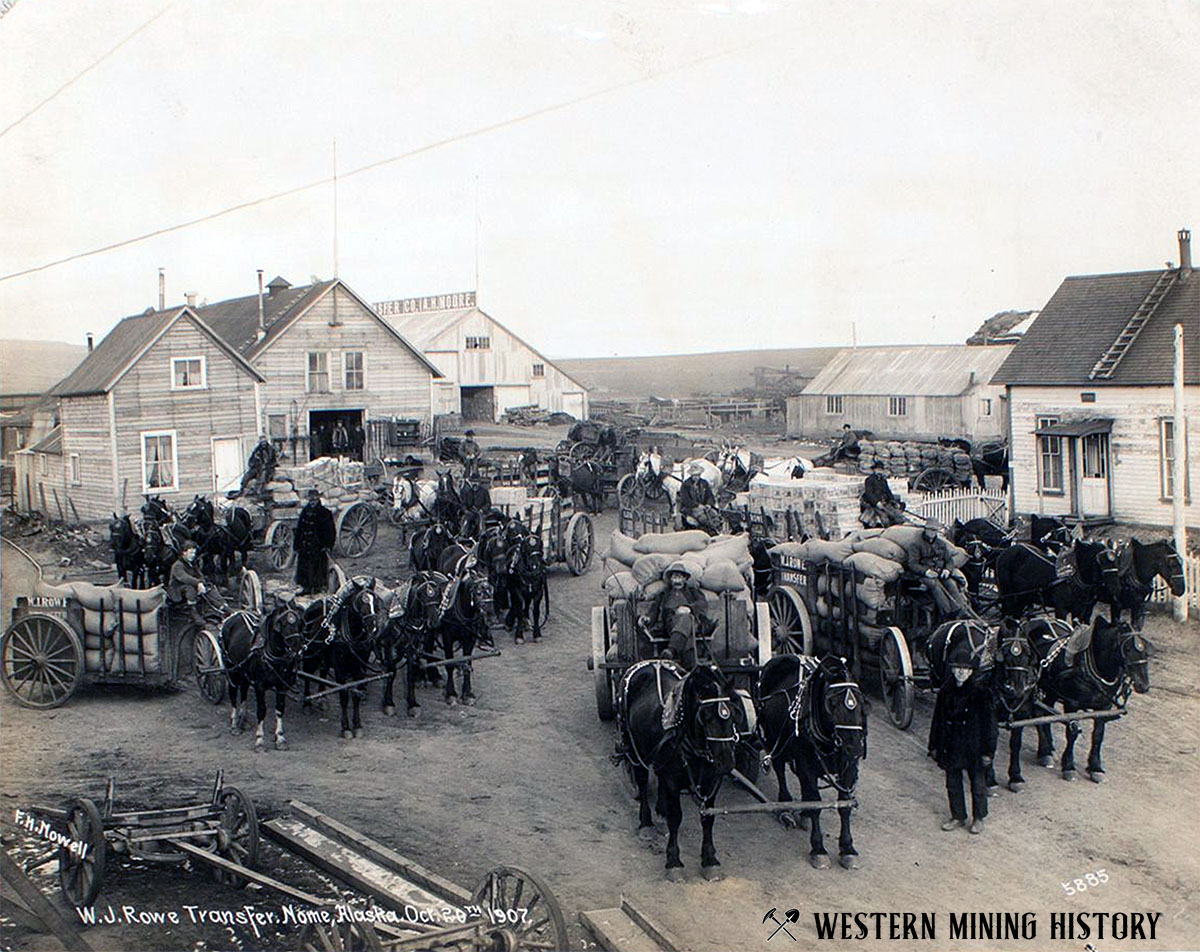The stagecoach has become an iconic symbol of the American West. In remote parts of the western frontier, the stagecoach was the only form of public transportation for years or decades before being replaced with trains or later roads and automobiles.
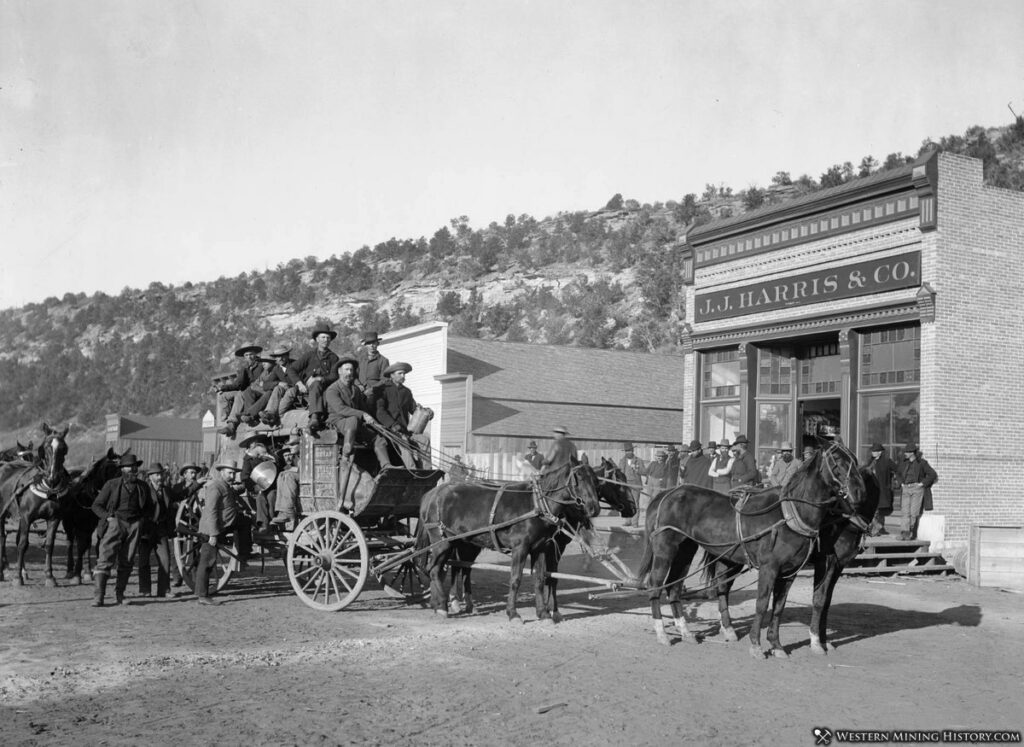
Stagecoaches were more than just transportation, they were an important source of camaraderie in the sparsely populated frontier as travelers would spend hours or days on the adventurous ride to some remote corner of the world.
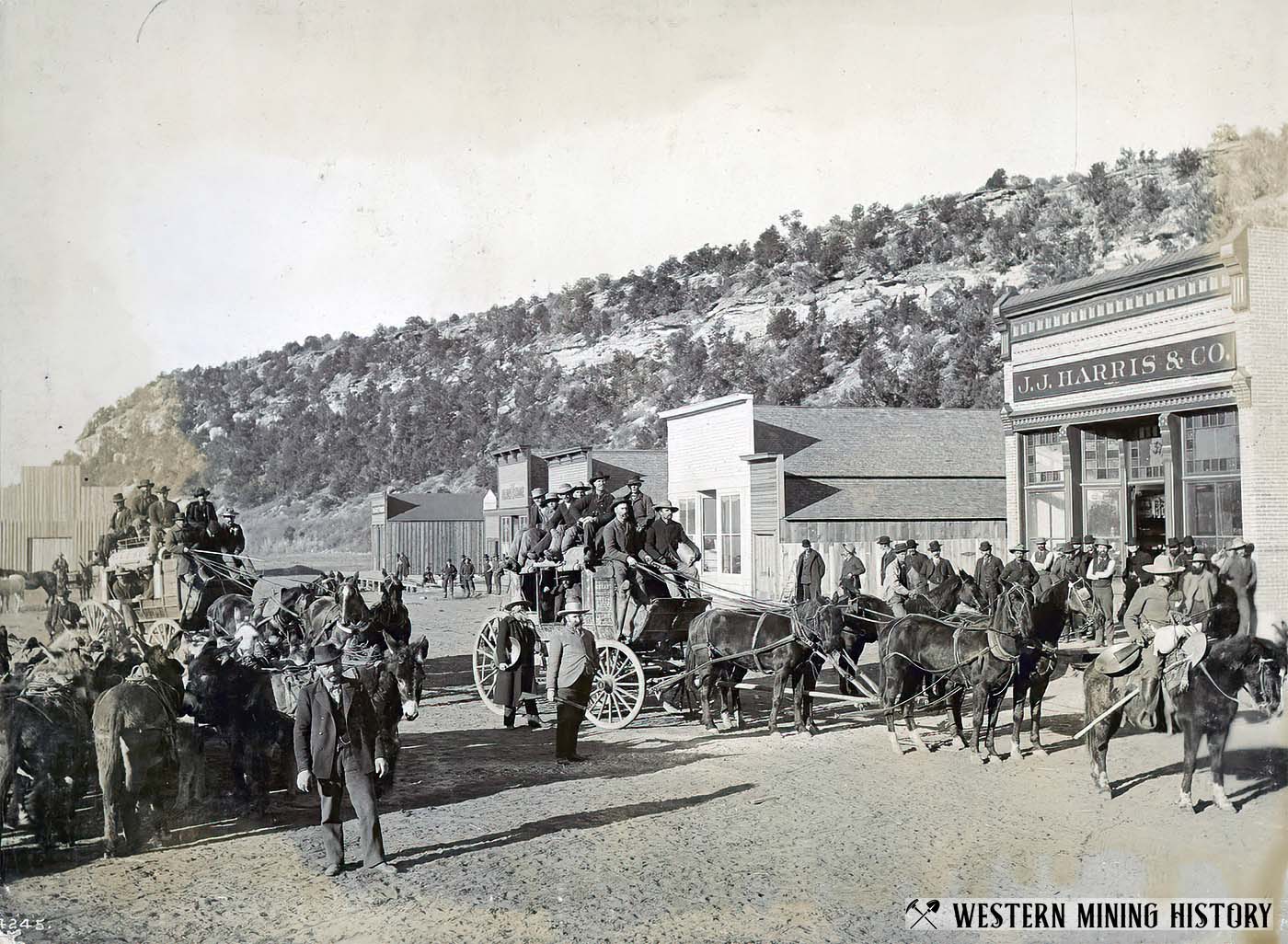
The stage stations became the hub of many communities, providing a central gathering place and a much needed source of excitement.
Travel by Stagecoach in Colorado was especially daring and exciting as the narrow roads were often carved into the sides of mountains with high passes, hastily built bridges over deep ravines, and precipitous drops always just a few feet away.
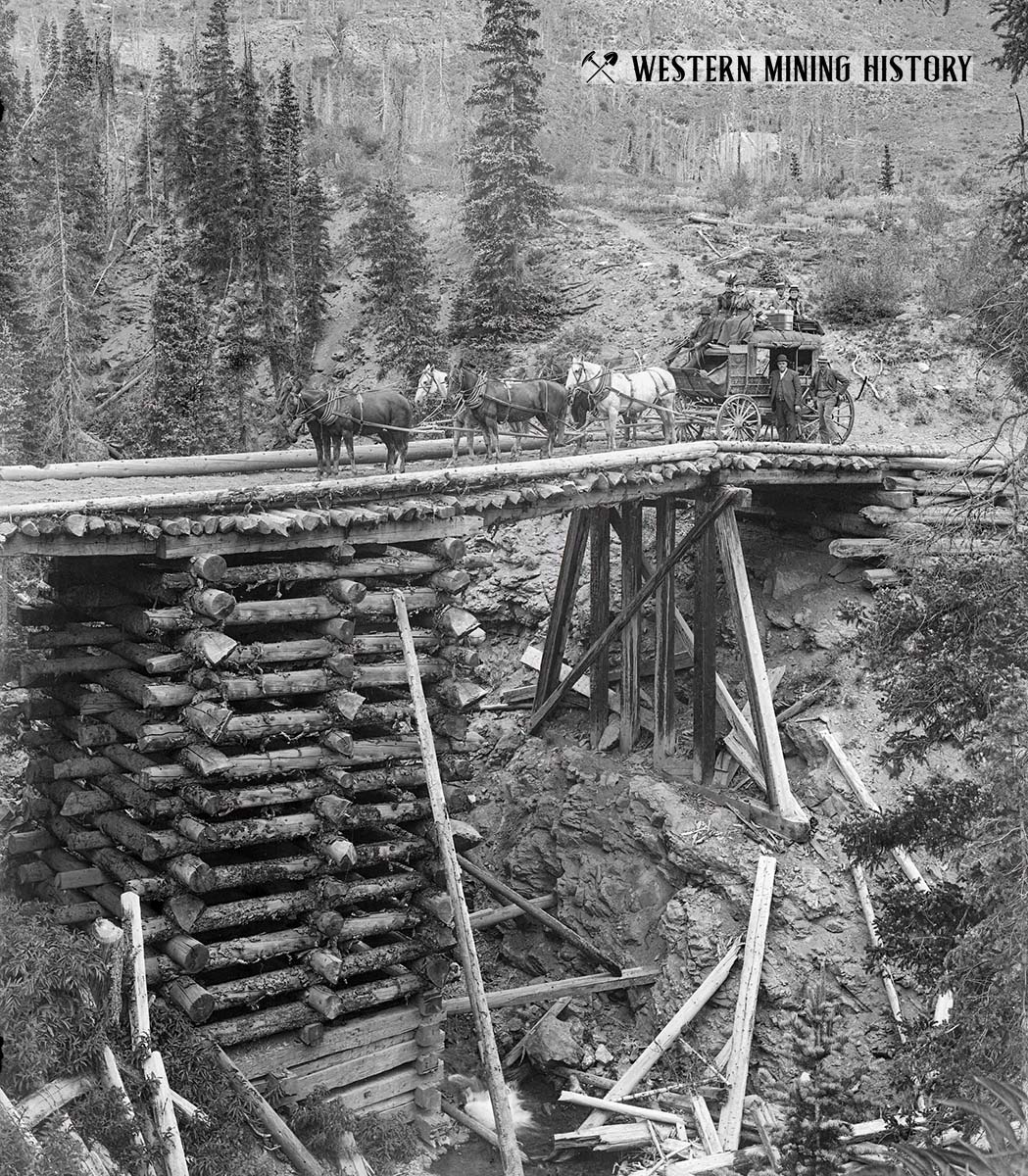
The image above of the stagecoach on a precariously tall log bridge is one of the most popular historical photos shared on this site. A good colorized version was created and is presented below.
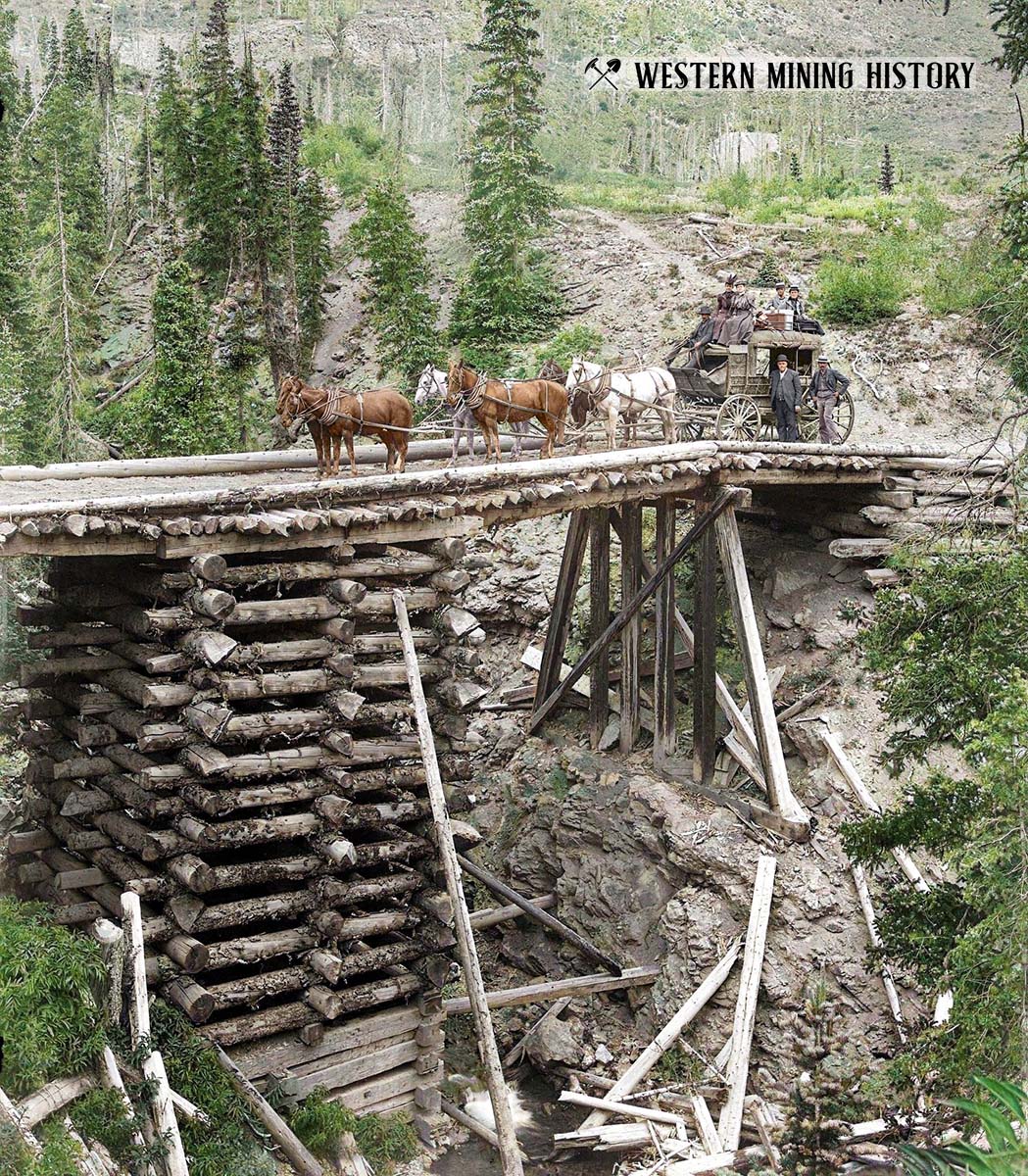
The road between the historic towns of Silverton and Ouray was the most dangerous in the state. Tolls were collected at the Bear Creek Falls station, seen in the following photo.
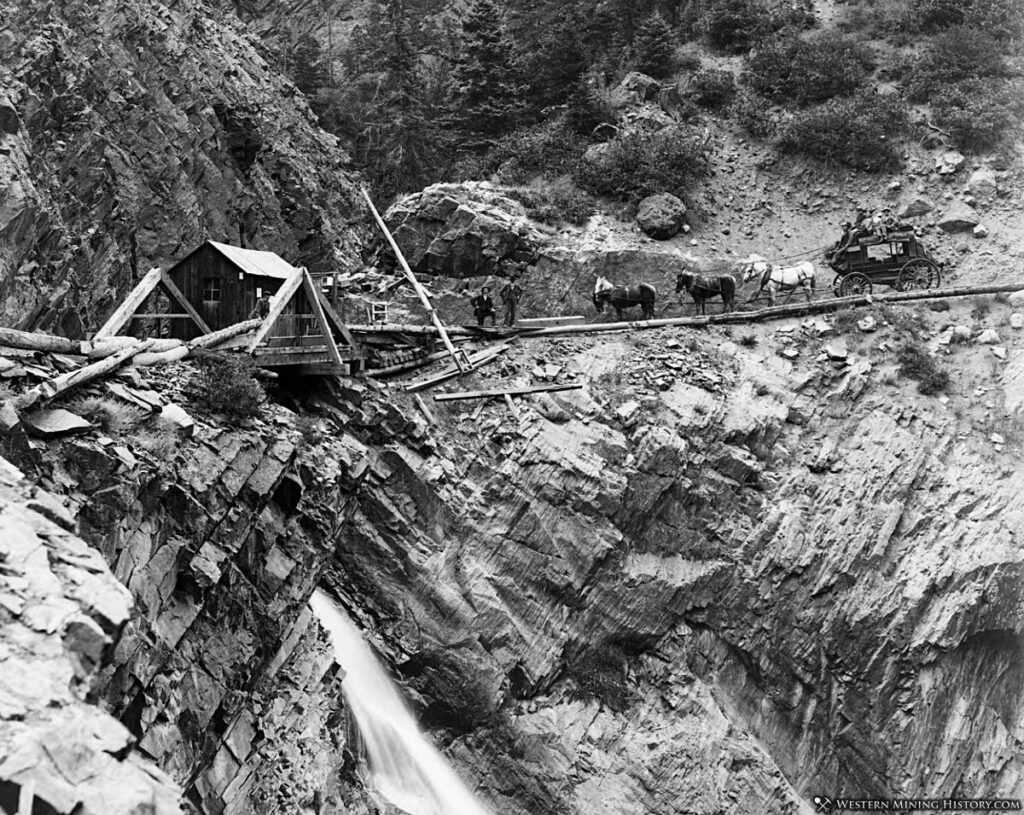
Related: The Impossible Road: Incredible Photos of the Otto Mears Toll Road
The 1879 mining rush to Leadville, Colorado was one of the West’s most important events. Pictured below is a stagecoach at the town of Red Cliff ready to make the trip to Leadville. The hastily constructed Star Hotel consists of a wood facade on the front of a canvas tent.
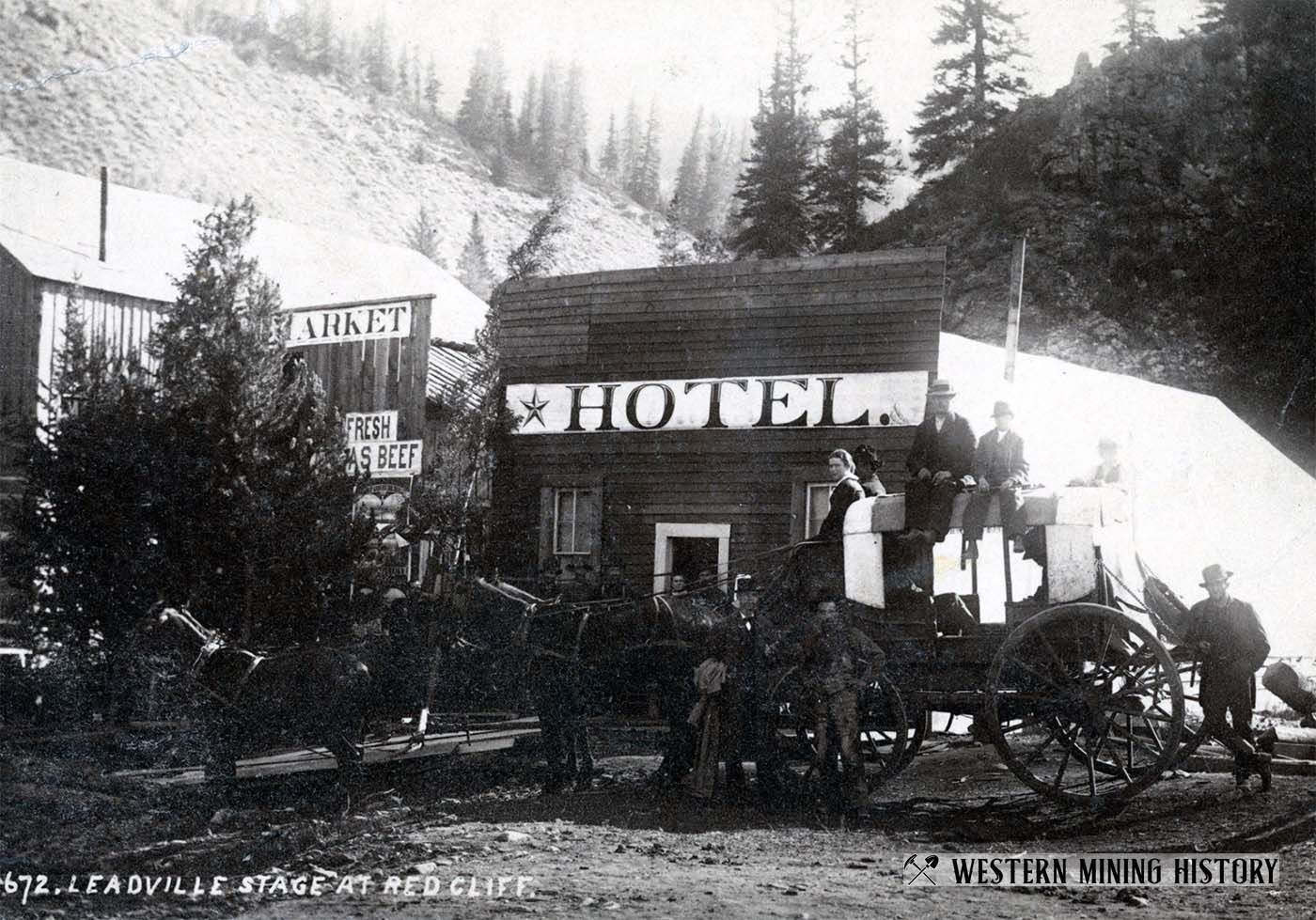
After communities in Colorado had been established for some time, the well-off residents would often turn to the stagecoach for an adventurous day trip. Boulder Canyon between Boulder and Nederland was a popular route for a daytime excursion into the mountains.
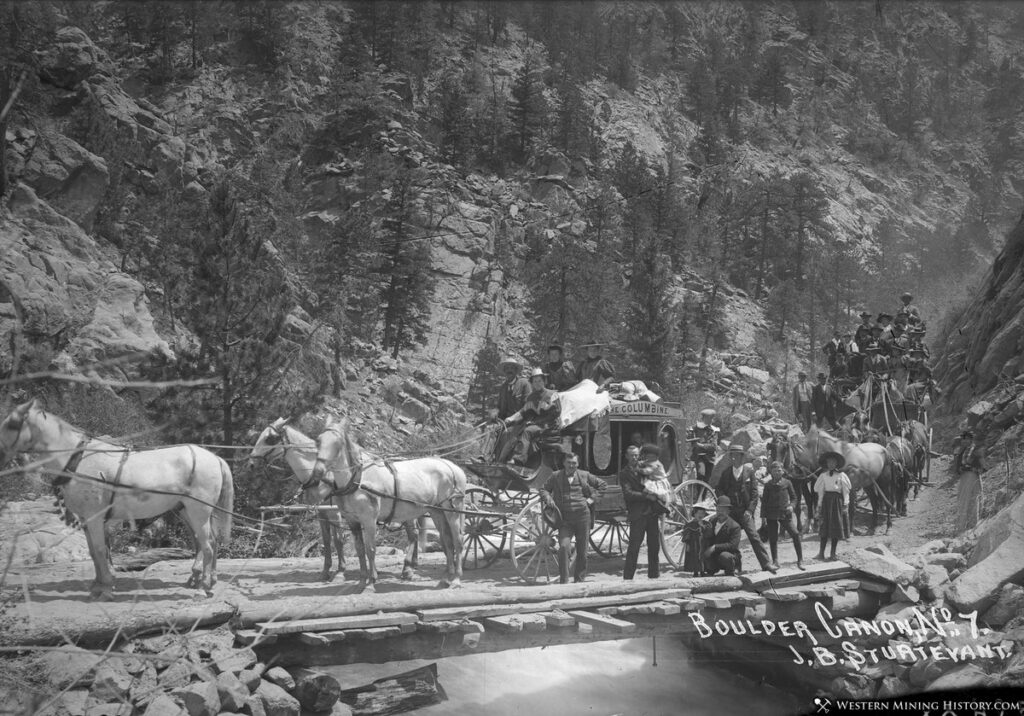
While most stage stations served travelers moving from one town to another or over long distances, some also catered to day-trippers and tourists. The image below of W.E. Galverts lunch house & stage station in Boulder Canyon shows how one enterprising businessman has capitalized on the popular stage route west of Boulder.
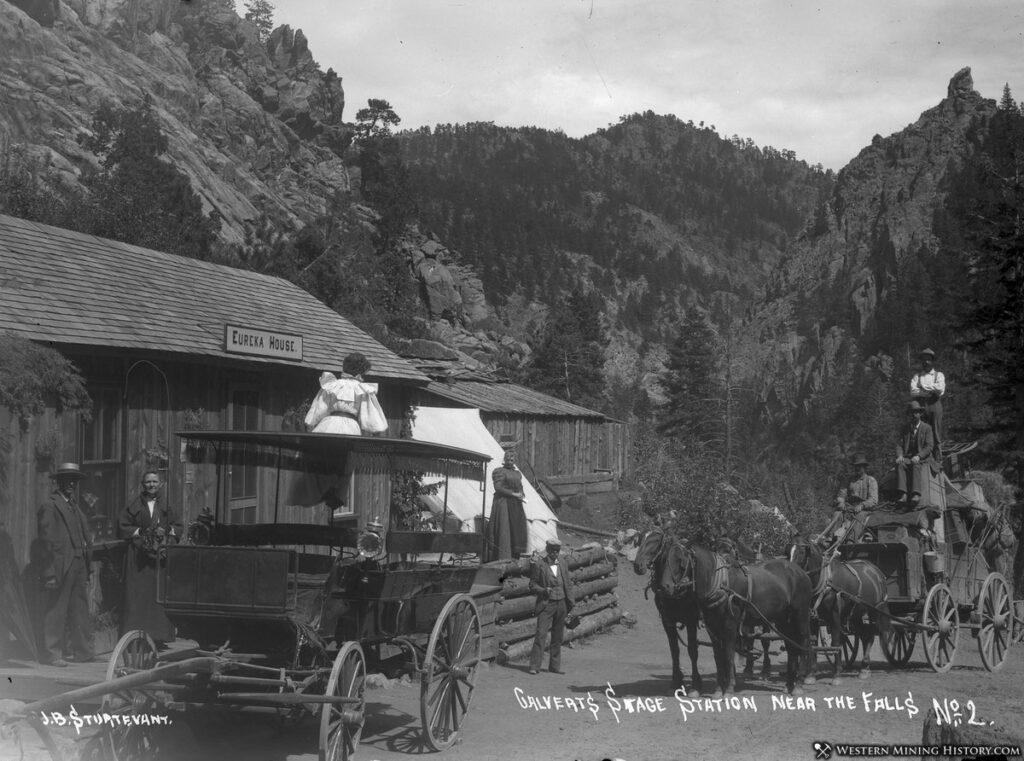
While casual adventurers were able to enjoy short excursions purely as recreation, the realities of traveling by stagecoach were often very different. Many stage routes operated 24 hours a day, and weary travelers often spent days enduring the harsh conditions of the primitive stage routes.
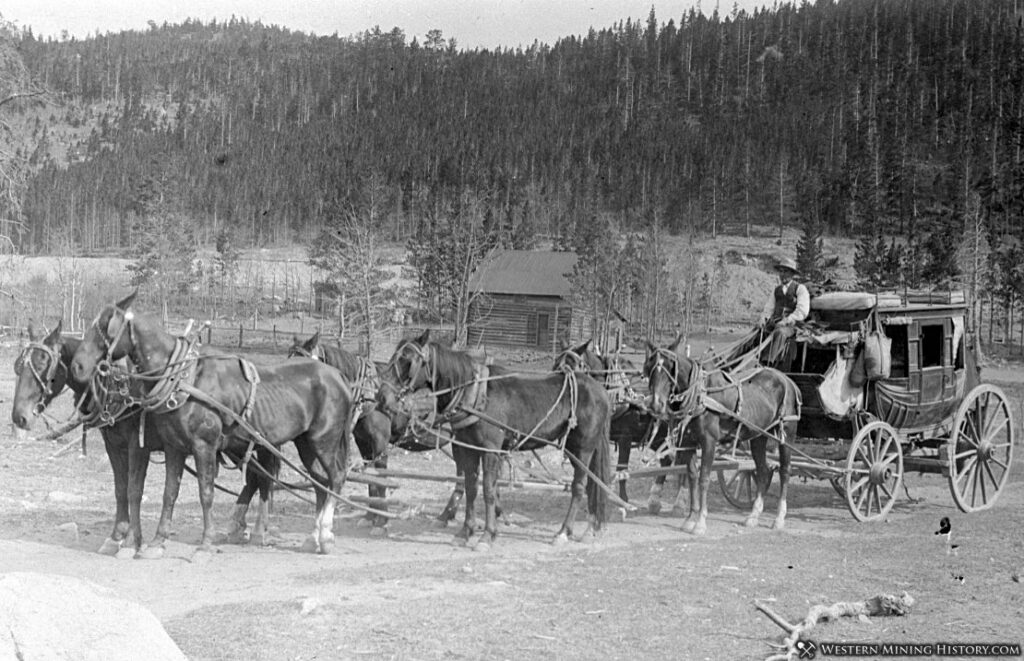
In the book Ben Holladay the Stagecoach King, the discomfort of lengthy stagecoach travel was described: “They were banged, beaten, and jolted, their heads were swollen and their faces bruised. Heads ached, nostrils were choked with sand, limbs were stiffened and bent with cramps.”
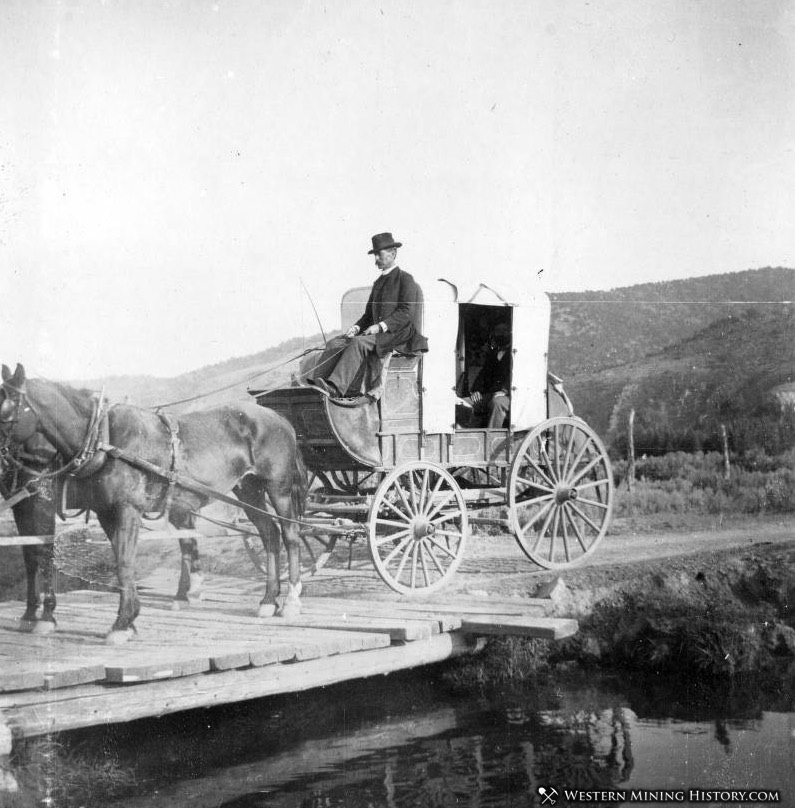
“Sometimes the disheartened travelers would leave the stage to rinse their mouths and dip their heads in some little creek, the water of which they did not dare to drink. Then, walking several miles ahead of the stage, they felt like new men again and forgot the discomforts of their ride in the brisk morning air while they looked on the beautiful prairie senery.”
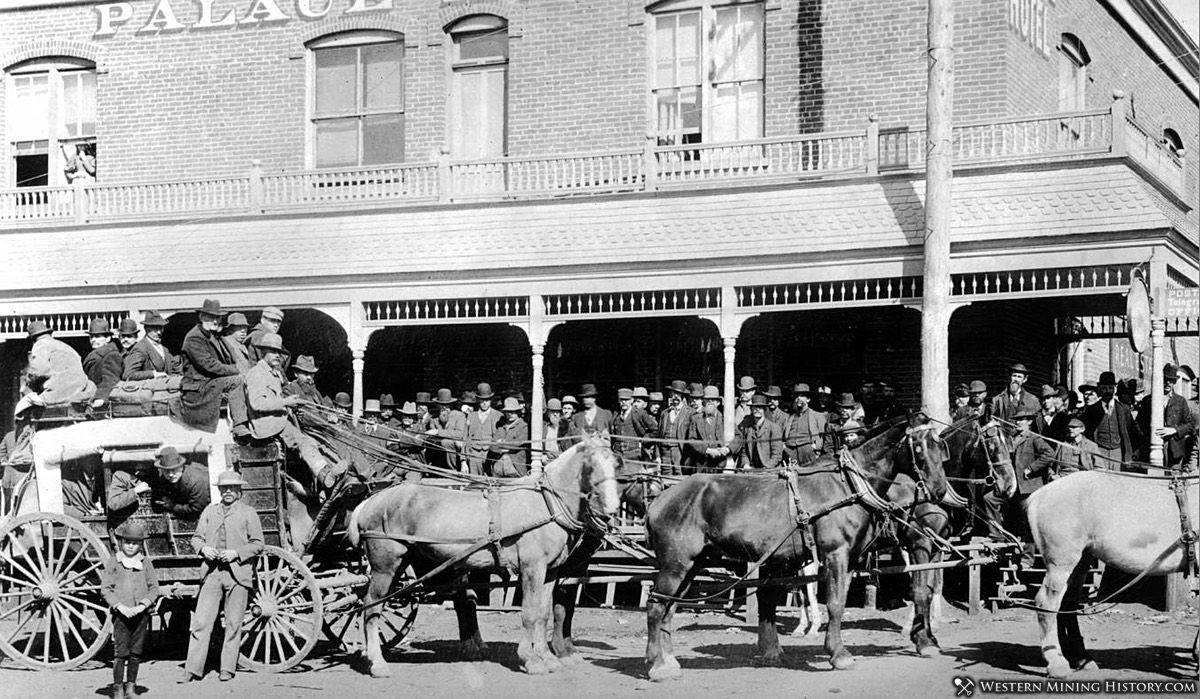
The great rush to Cripple Creek in the early 1890s brought thousands of prospectors, miners, and businessmen to the new district. The stagecoach was the primary mode of transportation for most travelers and arrivals and departures were often scenes of great excitement and activity.
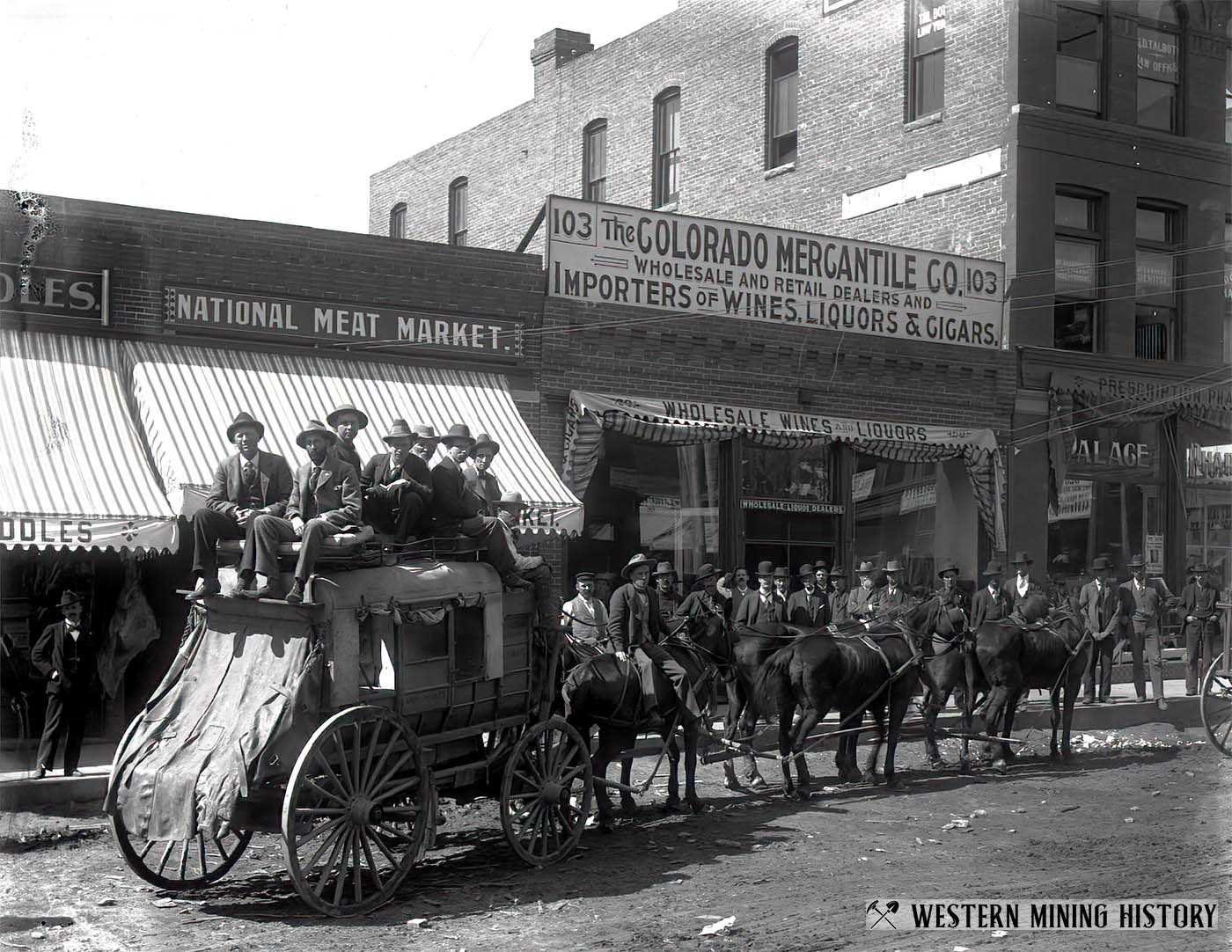
While conditions on stagecoaches were already uncomfortable for most travelers, there was also the constant menace of being victims of a stage robbery. Some robbers would simply steal the valuable contents of the stage, like bags of money or the U.S. mail, while others would brazenly march all of the passengers out of the stage and proceed to pat them down and steal all of their valuable.
The following image shows two stagecoaches preparing to leave Florissant for the boom town of Cripple Creek. This would have been approximately an eighteen mile journey.
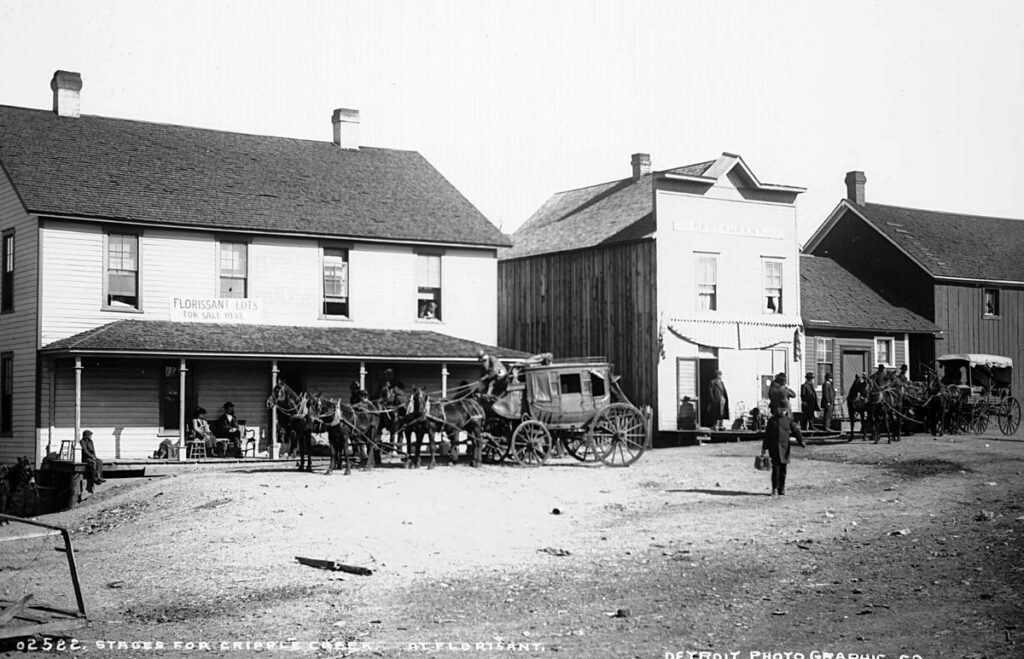
The following image shows the halfway horse on the “Hundley Stage Line” to Cripple Creek. The signs on the building read “Neef Bros Western Brewery Denver, Colo.”. The halfway house was probably a welcome stop to tired passengers, complete with beers, as the horses were changed.
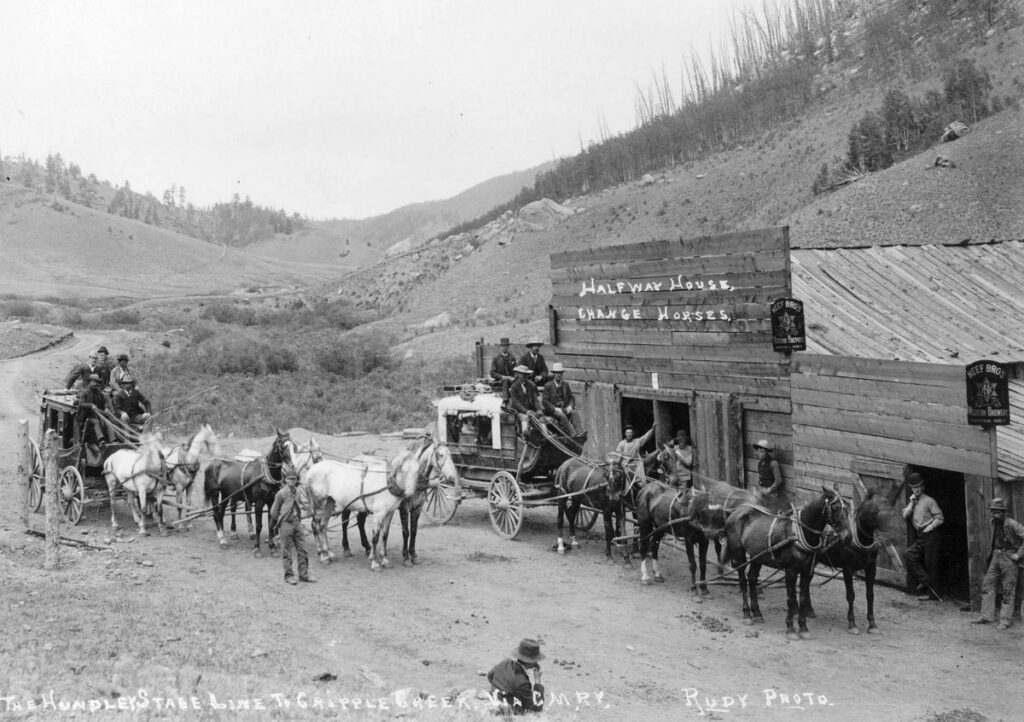
Zooming in on another view of the Hundley Stage Line reveals just how packed many of these stagecoaches were. During the early 1890s, the great boom at Cripple Creek resulted in tens of thousands of people flooding into the area, most of them by stagecoach.
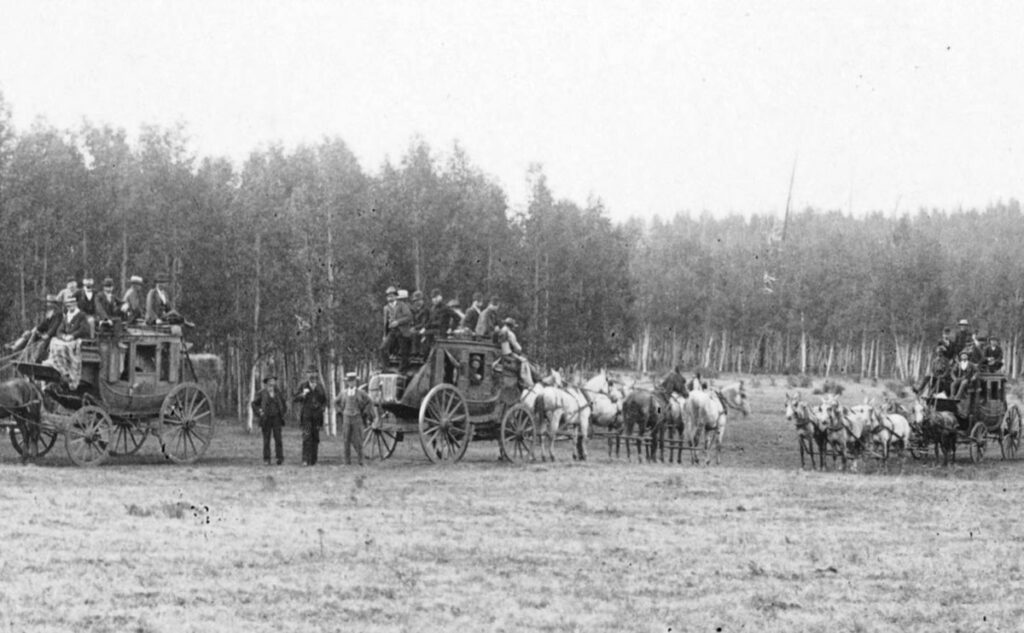
Another photo illustrates the numerous stagecoaches and freight wagons that were transporting huge numbers of people and tons of freight to Cripple Creek.
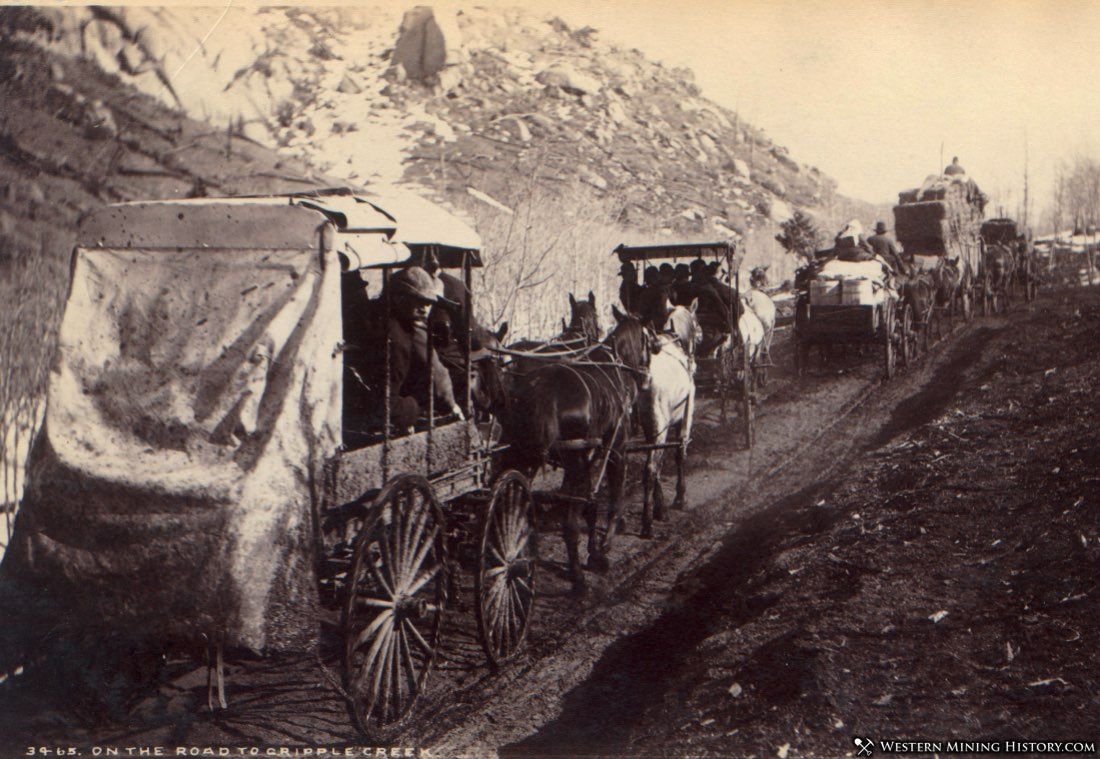
Cameron, also known as Grassy, was one of the many towns that sprang up in the Cripple Creek district in the 1890s. Here the Cripple Creek Stage meets the train at the Midland Railroad station.
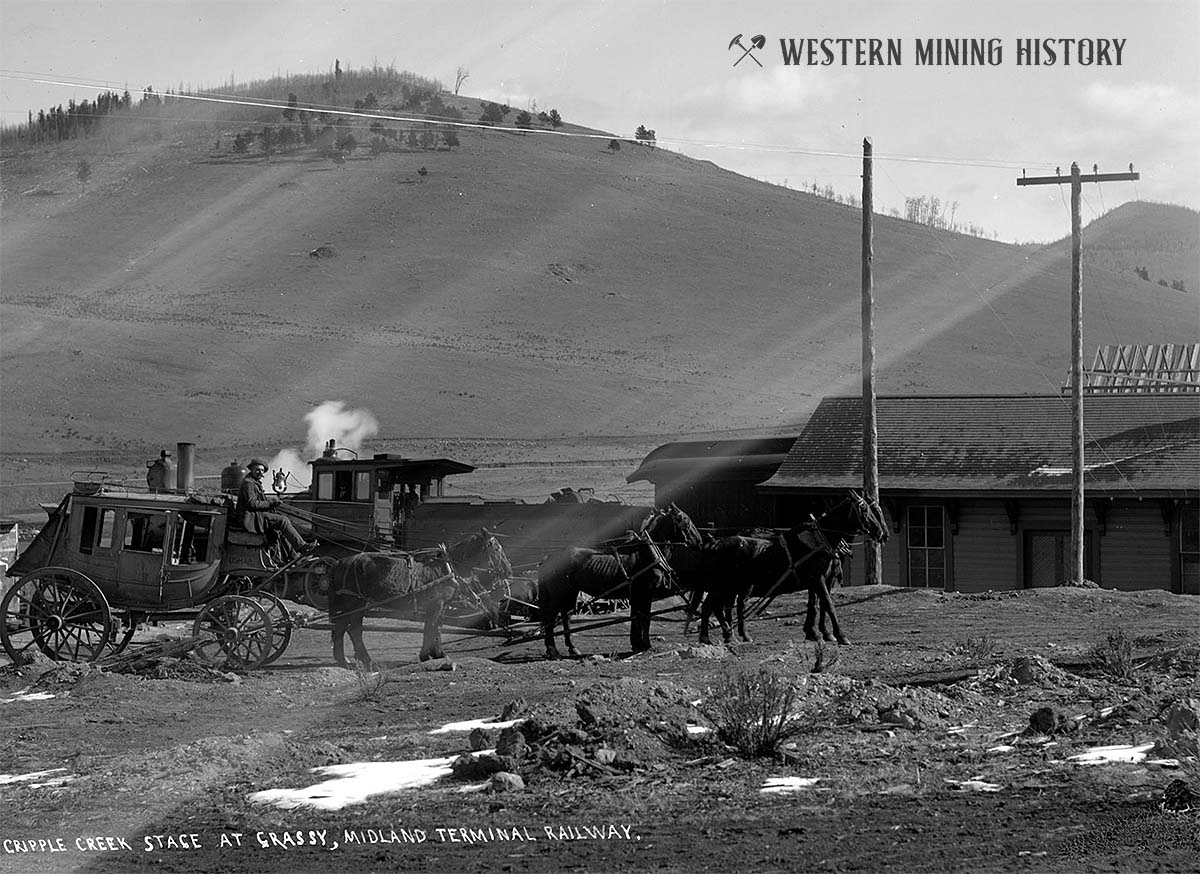
The following image shows a Cripple Creek stagecoach with “US Mail” stenciled below the driver. Note the tough looking traveler posing by the horses.
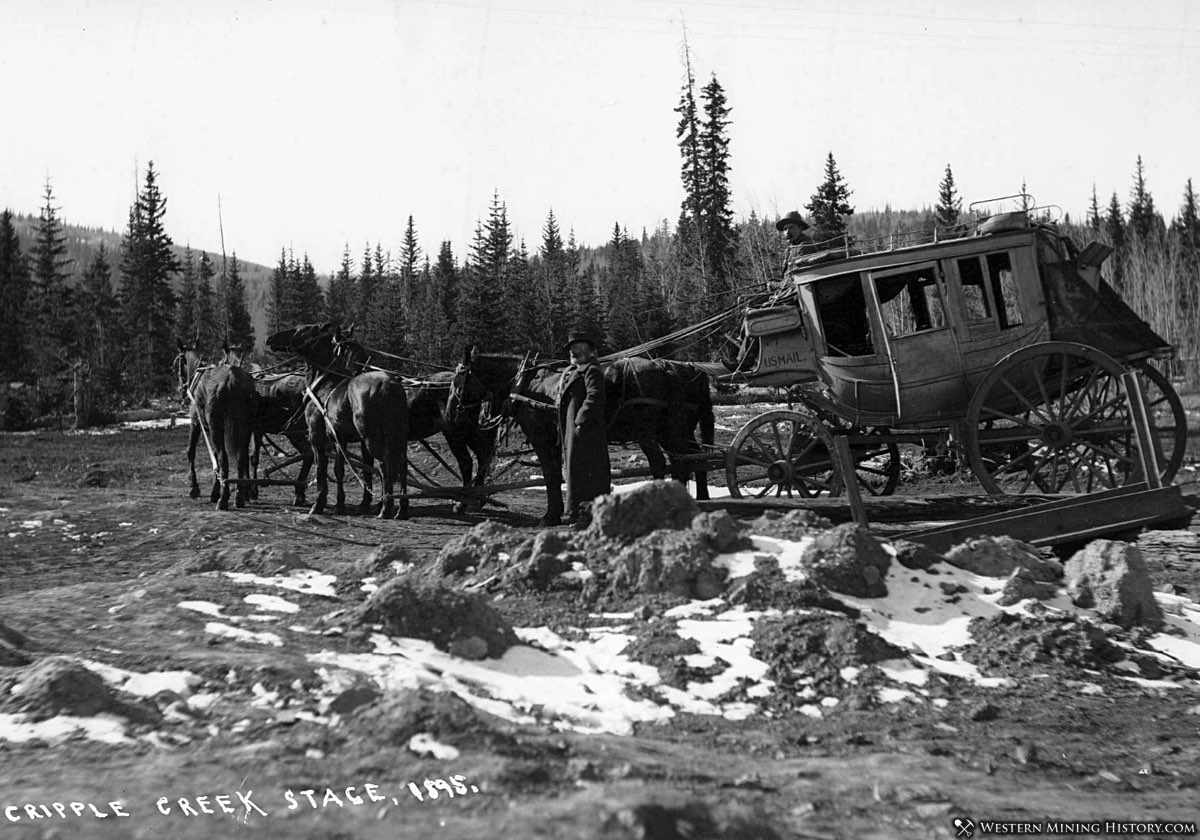
With the stagecoach being the vital link between many remote Colorado mining camps, one can imagine the variety of mountain scenes, interesting communities, and colorful characters that travelers would would have been witness to.
First time visitors to Creede, Colorado were probably awestruck with views like these.
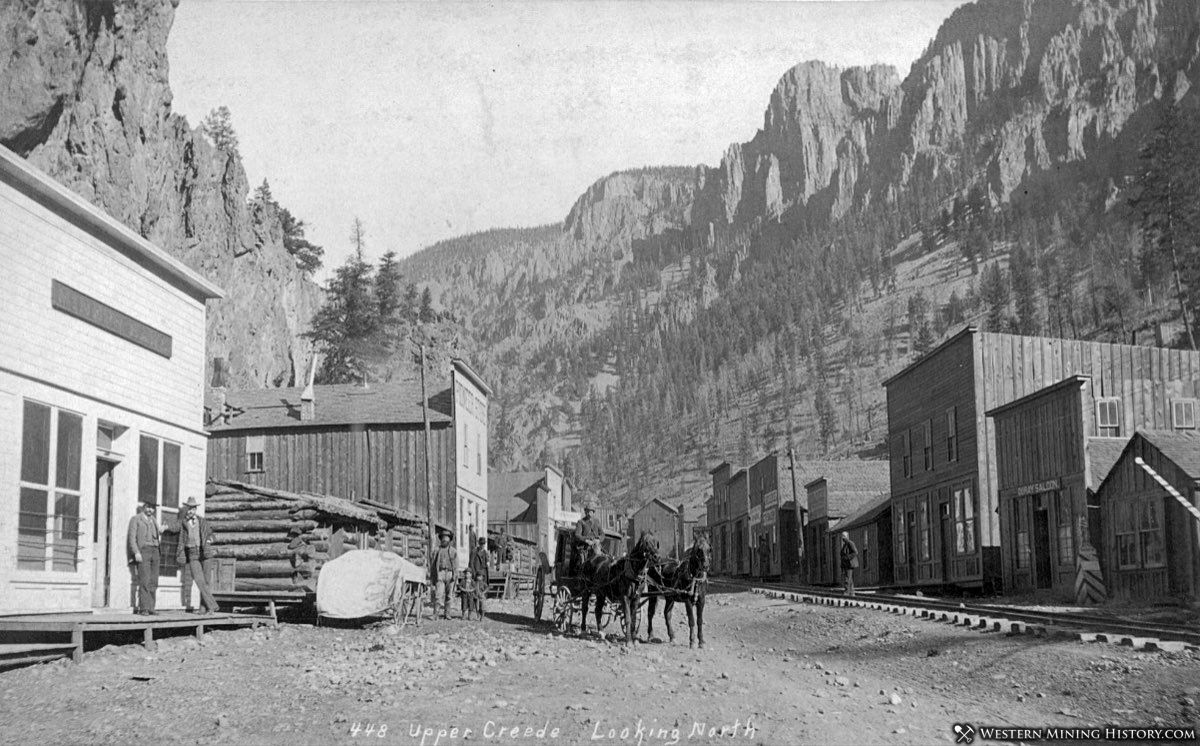
While the stagecoaches were often traversing what was a great wilderness at the time, arrival at one of Colorado’s mining boom towns was quite a contrast to the surrounding territory. The modern Beaumont Hotel in Ouray, Colorado offered travelers luxurious accommodations at the end of a long journey.
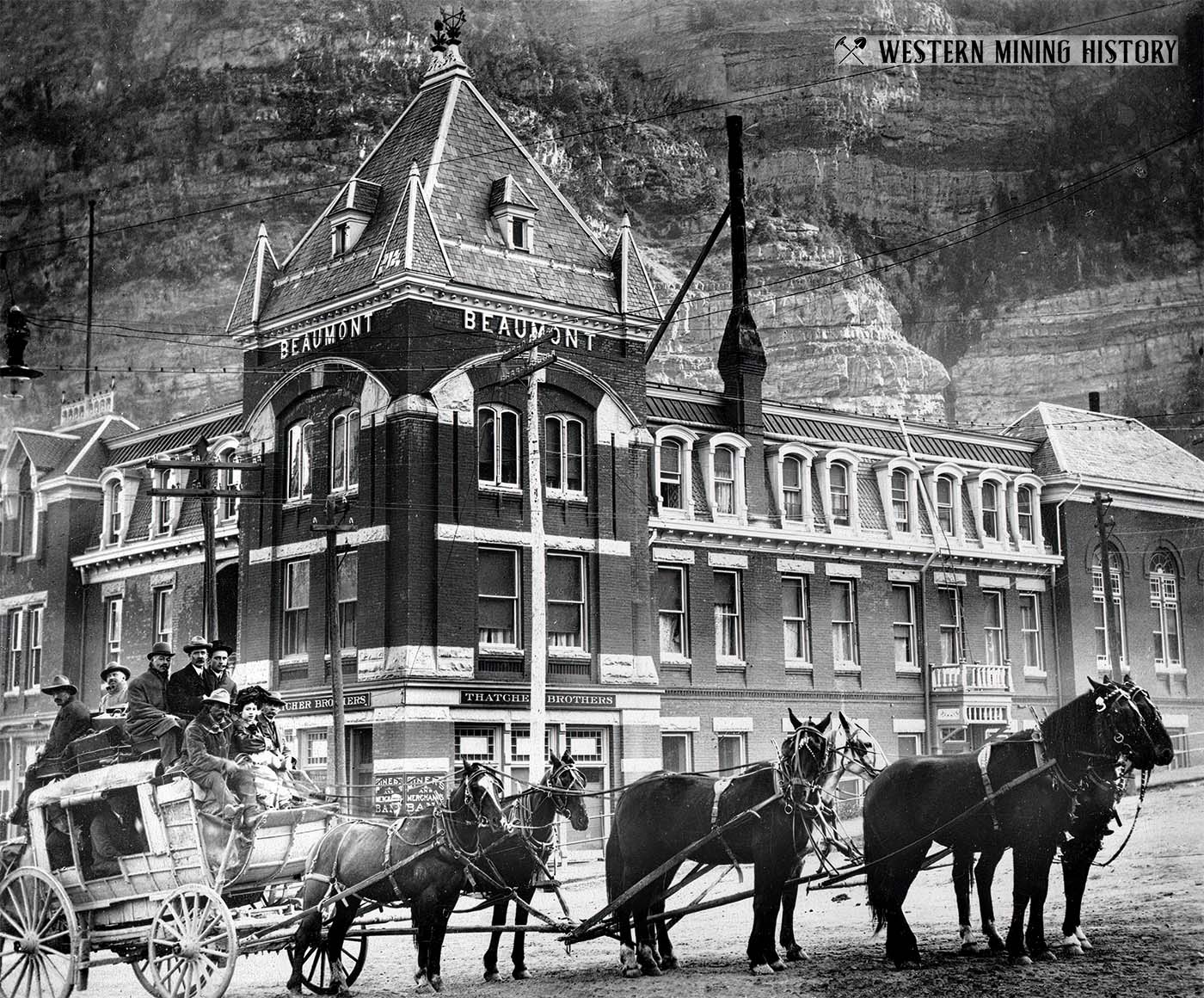
Ouray is an extremely popular tourist destination and the Beaumont Hotel is still in business today. This is another photo worthy of colorization.
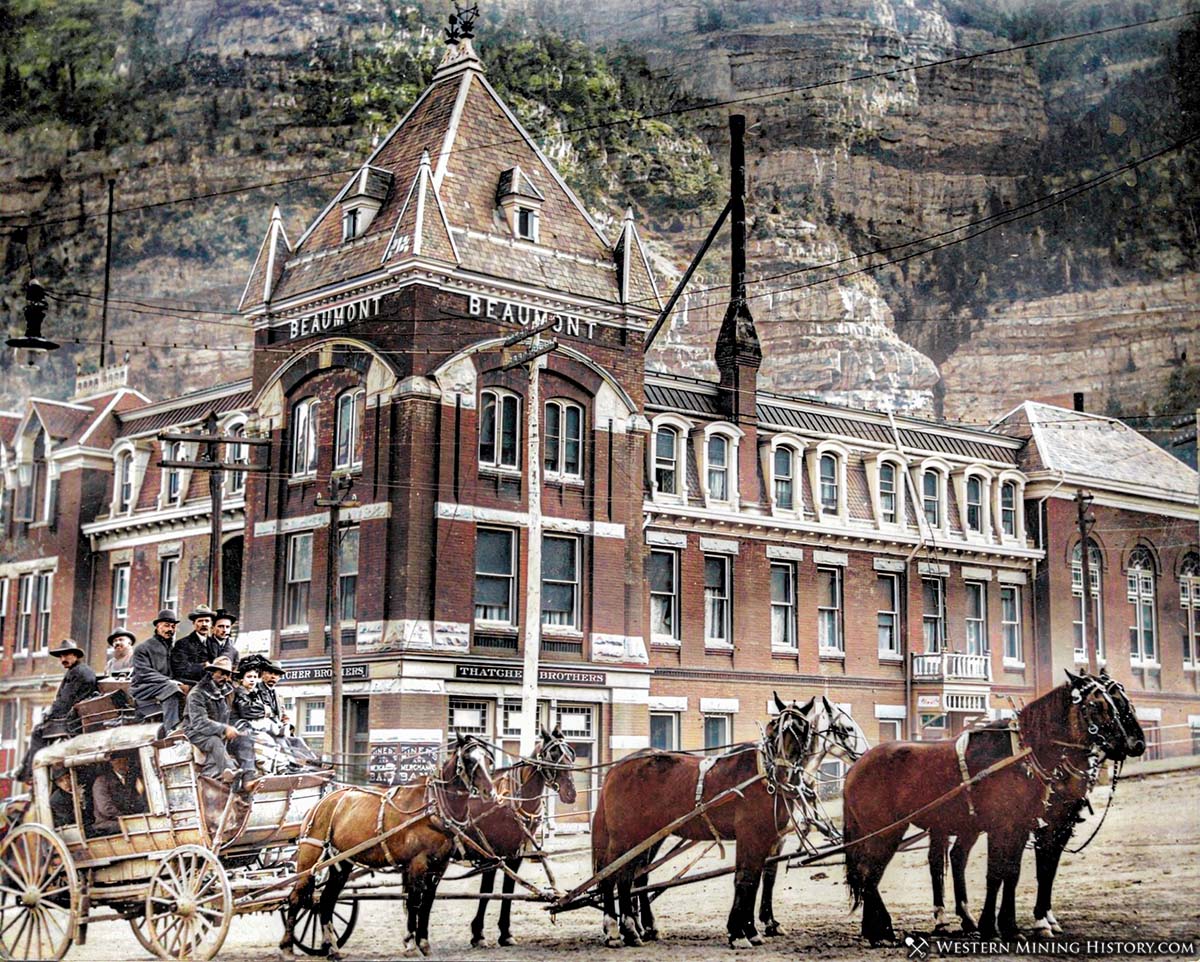
Red Mountain Town was the center of Colorado’s second richest silver mining area. The roads in the area were particularly precarious, and a trip to or from this important silver camp was certainly a harrowing experience.
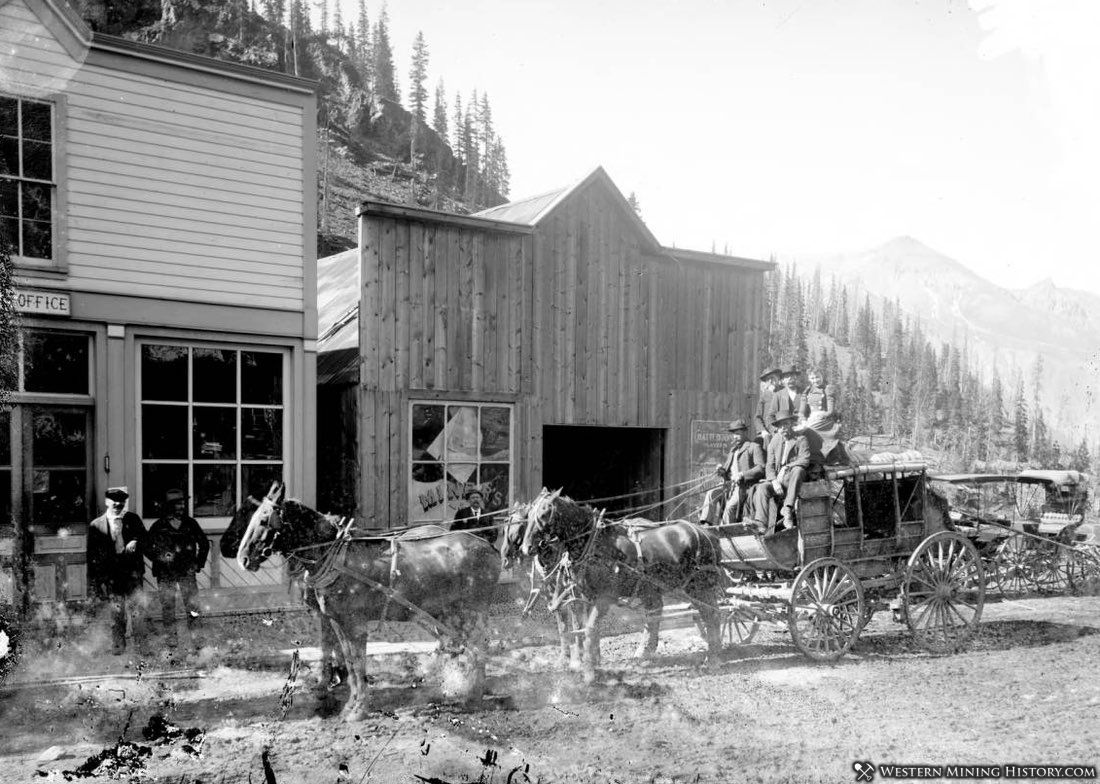
The Talmage & Lilly stage at Eldora, Colorado was apparently doing a good business in 1899 when the following photo was taken. This year marked Eldora’s peak time of prosperity, but by the early 1900s the mines, and the town were in decline.
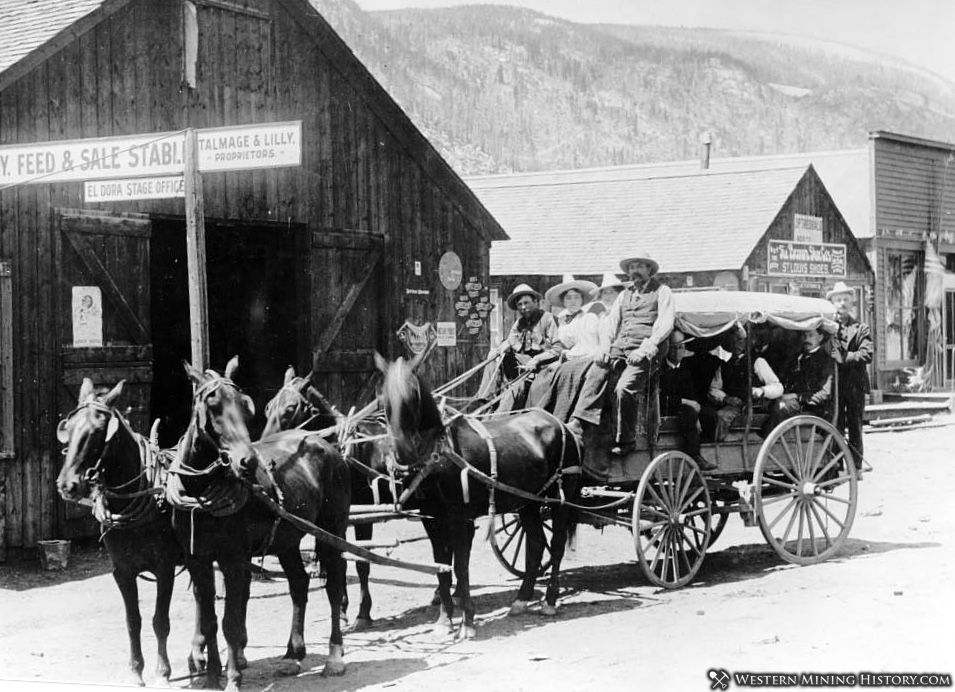
These two stagecoaches appear to be pulling out of their storage barn at Central City, Colorado (1875). The left stage has “Omnibus Line” painted along the top. Note the two children in interesting period garb, and what appears to be a dog.
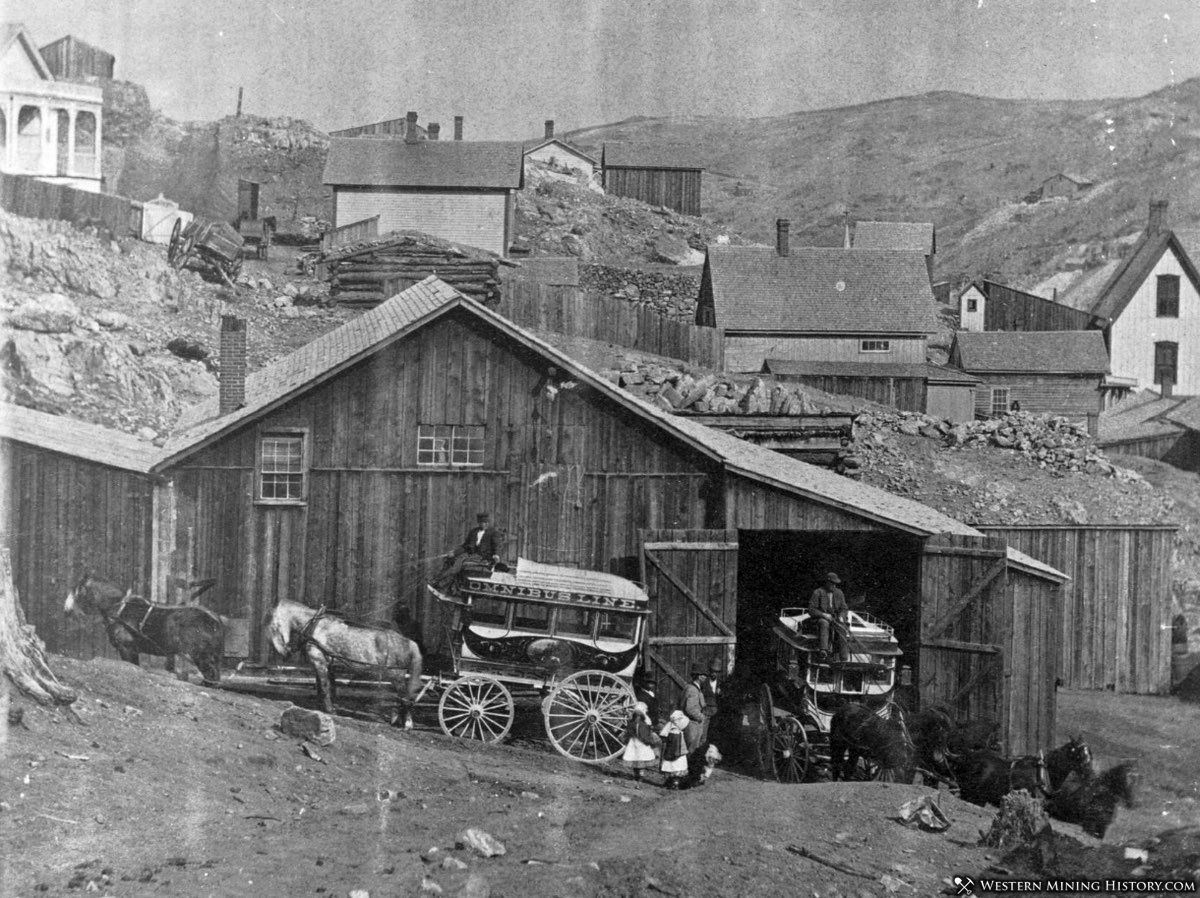
Although stagecoaches coexisted with railroads for decades, ultimately the combination of more rail lines and the proliferation of automobiles would signal the end of the stagecoach era.
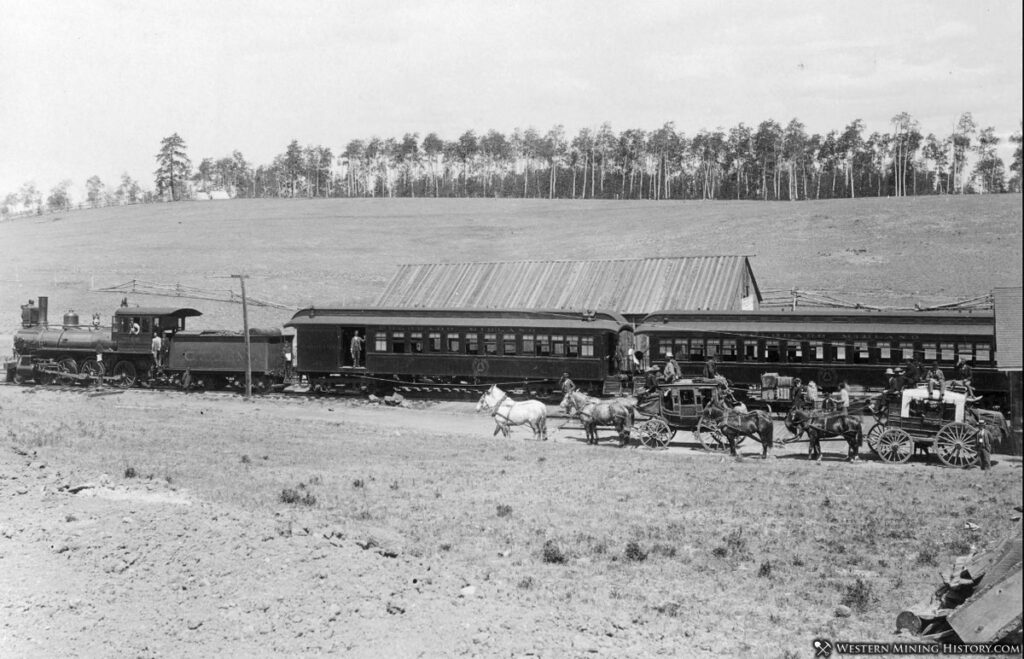
Some stage lines operated until 1915 or even later, as seen below in this photo of the “Old Circle Route Stage” that operated out of Ouray, Colorado.
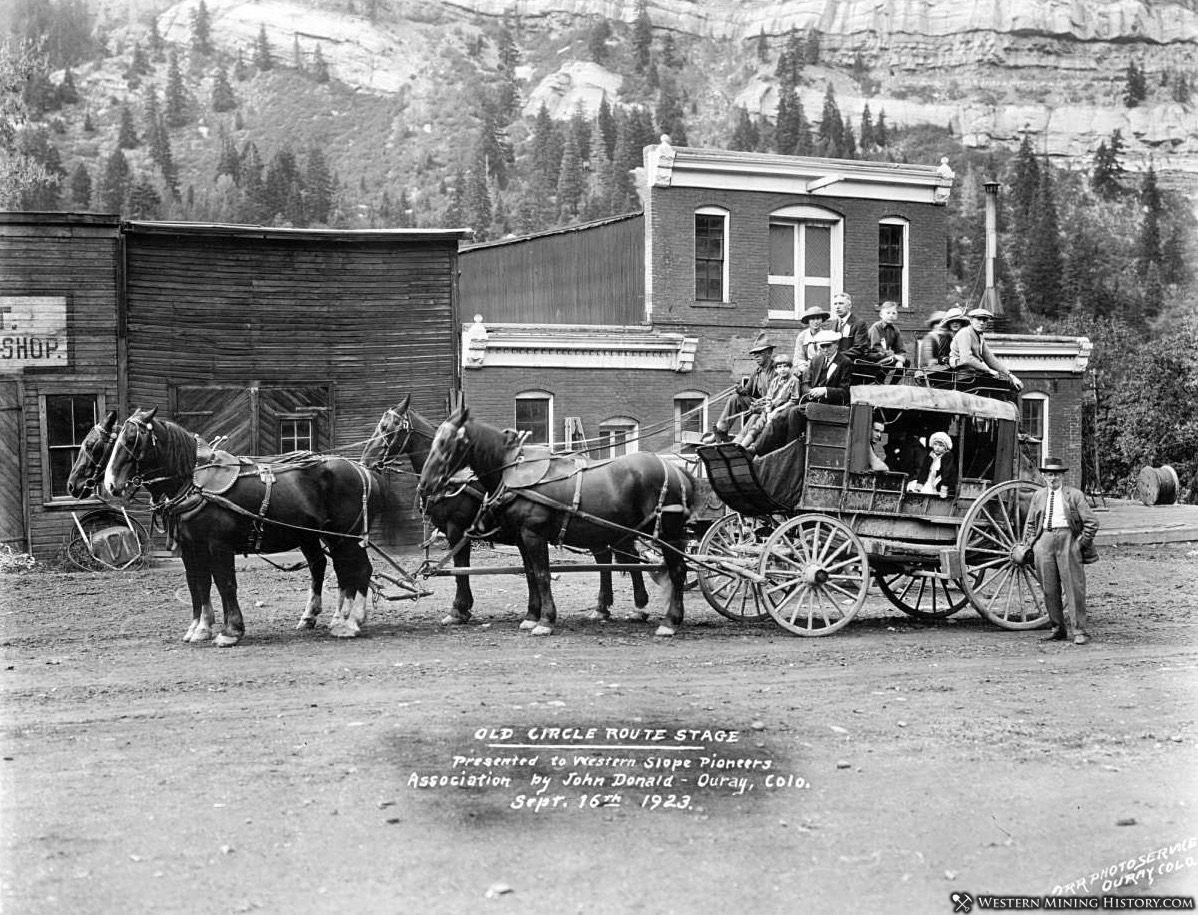
Despite the discomfort of the stagecoach compared to the luxury automobiles of the modern world, this iconic form of travel still captures the imagination of people from around the world who reminisce about slower, simpler times.
Heavy Freight Wagons of the American West
Freighting in the West was one of the most essential jobs, yet it is rarely talked about today. Heavy Freight Wagons of the American West examines the men, wagons, and animals that provided this important service to frontier mining towns.
